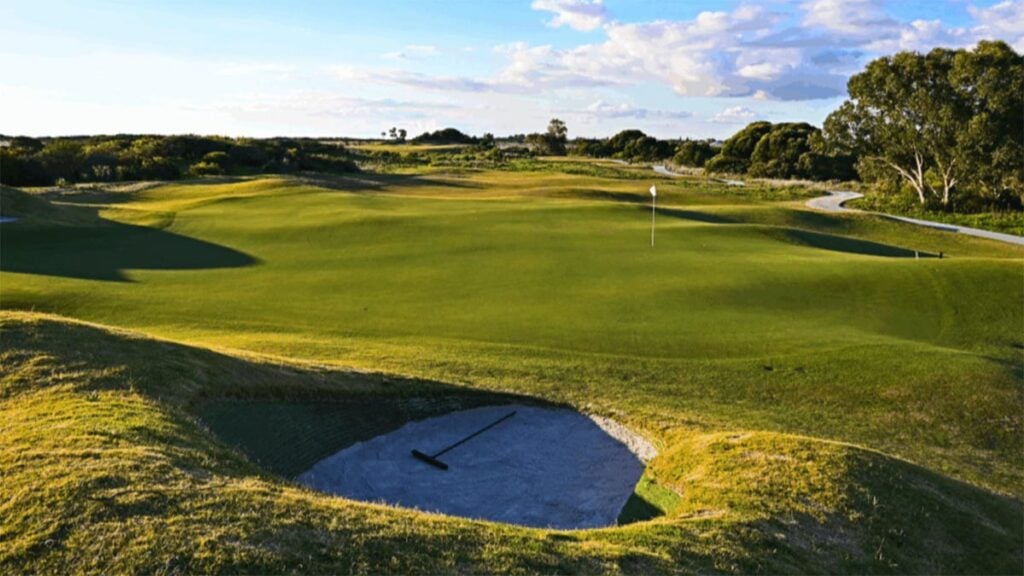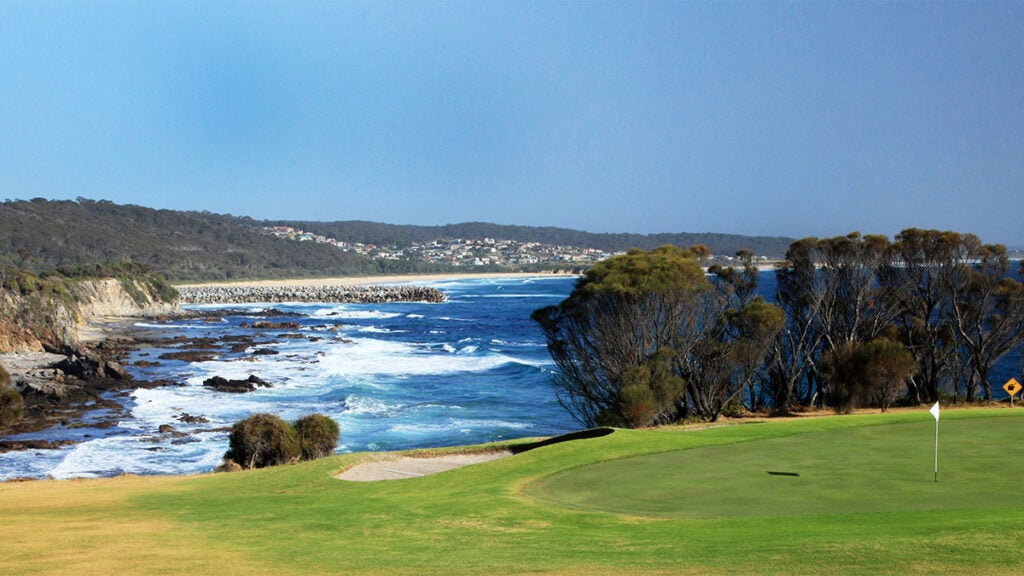New tariffs proposed or implemented by the Trump administration so far in 2025 are expected to significantly impact the golf industry, primarily by increasing costs for equipment, apparel and related products.
Here’s a breakdown based on current information:
1. Increased costs for golf equipment
Tariff impact: Tariffs of 10-25 percent on imports from key manufacturing hubs like China, Mexico and Canada, and up to 60 percent on Chinese goods, raise the cost of importing golf clubs, balls, bags and components. For example, importing a driver from certain Asian countries could cost 30-50 percent more, potentially pushing retail prices for a $600 driver to $800-$900 and even higher for the high-end drivers.
Supply-chain dependency: Major brands like Titleist, TaylorMade, Callaway and Ping rely heavily on global supply chains, with components and assembly often occurring in China, Vietnam and other Asian countries. These tariffs increase production costs, which are typically passed on to consumers. Vietnam is reportedly close to signing an agreement with the US, so that may help some suppliers.
Consumer impact: Higher prices may reduce demand, especially for premium equipment. Golfers might delay purchases or opt for lower-priced alternatives, impacting sales volumes. Industry insiders note that a 30 percent price hike on top of recent increases could be a “bridge too far” for many consumers.
2. Impact on golf apparel and accessories
Price hikes: Tariffs on apparel and shoes, many of which are produced in China and South-East Asia, are expected to increase retail prices.
Brands affected: Companies like Under Armour and Nike have voiced concerns about tariffs raising consumer costs. However, brands with diversified supply chains (e.g. Under Armour sourcing only 3 percent from China) may be less impacted.
3. Golf-course operations and construction
Higher operational costs: Tariffs on imported materials used for course infrastructure, and on fertilisers, fungicides and irrigation components, will increase maintenance and construction costs. This could lead to higher green fees or fewer new course developments.
Golf carts: Tariffs of 10-25 percent on vehicles from Mexico, Canada and higher for China could raise golf cart prices by $1,200 to $3,500 per unit, affecting course operations and community transport. Chinese-made carts, like Kandi and Evolution, face steeper hikes due to higher tariffs, potentially reducing their affordability.
4. Industry responses and strategies
Price absorption vs increases: Some manufacturers may absorb costs to maintain market share, sacrificing profit margins, while others will raise prices. Smaller brands like PXG, with flexible supply chains, may adapt more easily than larger ones heavily reliant on Chinese manufacturing.
Supply-chain shifts: Companies are exploring alternatives, such as moving production to Vietnam or Mexico, or increasing domestic manufacturing (e.g. Denago’s Texas factory). However, shifting production is costly and slow, as specialised facilities for golf equipment are scarce in the US.
Stockpiling and timing: Manufacturers and retailers are stockpiling components or locking in pre-tariff prices. Golfers are advised to buy equipment soon, as price hikes may not fully hit until new product launches in late 2025 or early 2026.
5. Broader economic and consumer impacts
Inflationary pressure: Economists warn that tariffs act as a hidden tax, raising prices and fuelling inflation. The average household could face an additional $1,500 in costs in 2025, reducing purchasing power for discretionary spending like golf.
Accessibility concerns: Higher costs could exacerbate participation gaps, particularly for lower-income households, as seen after the 2017 tariffs when sports equipment prices rose (e.g. soccer gear from $115 to $167.50 by 2023). This could limit golf’s growth among younger or less affluent players.
Retaliatory tariffs: Canada and the EU have imposed retaliatory tariffs on US goods, including sports equipment, which could affect American golf brands exporting to these markets.
6. Uncertainty and negotiation
Fluid situation: The tariff landscape is volatile, with exemptions possible through negotiations (e.g. Vietnam aiming for zero tariffs). Past Trump-era tariffs saw limited impact on golf due to exemptions, while his affinity for golf may lead to leniency.
Long-term outlook: While short-term price hikes are likely, long-term effects depend on trade negotiations and industry adaptations. If tariffs persist, reduced demand could hurt manufacturers’ profits.
7. Sentiment and anecdotal evidence
- Social media reflects consumer frustration, with posts blaming tariffs for imminent price increases (e.g. TaylorMade clubs). Golfers are urged to act quickly on purchases to avoid hikes.
- Industry leaders express cautious optimism, noting that golf’s $100 billion US market may not be a primary tariff target, but they are preparing contingency plans.
Recommendations for golfers
Act quickly: Purchase equipment before any price hikes, which will probably start with 2026 models.
Consider US brands: Brands with US manufacturing, like certain premium golf ball producers, may face fewer tariff-related increases.
Monitor developments: Stay informed on tariff exemptions or trade deals that could mitigate impacts.
New tariffs are poised to raise golf equipment, apparel and operational costs, potentially reducing demand and straining industry profits. While some brands may mitigate impacts through supply-chain shifts or cost absorption, consumers should prepare for higher prices. The situation remains fluid, with outcomes hinging on trade negotiations and industry adaptability. Golf’s resilience, bolstered by a golf-friendly American president, may soften the blow, but short-term challenges are likely.
For more information on Dan Corbett or Superannuation Caddie, go to supercaddie.com.au or e-mail Dan at [email protected]. He is an authorised representative and Super Caddie Financial Advice (t/a King of the Mountain Financial Advice), is authorised by King Of The Mountain Pty Ltd ABN 72 642 974 061 AFSL No. 524853 to provide financial advice. The above information is general advice, and you should always check that it is right for you before you rely on this to make a decision regarding your circumstances.




